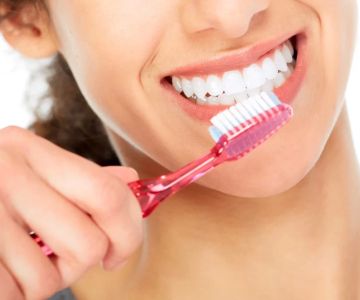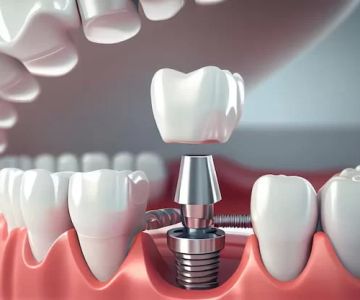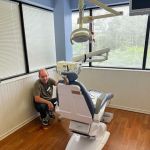What Are the Best Braces for Adults? A Complete Guide to Adult Braces Options
- 1. Types of Braces for Adults: Which is Right for You?
- 2. The Benefits of Getting Braces as an Adult
- 3. Invisible Braces: The Popular Choice for Adults
- 4. Traditional Braces: Still a Reliable Option for Adults
- 5. Cost Considerations for Adult Braces
1. Types of Braces for Adults: Which is Right for You?
When it comes to choosing braces for adults, there are several options to consider. Traditional metal braces, ceramic braces, clear aligners, and lingual braces all offer different advantages depending on your needs. Traditional metal braces are the most common and effective for complex dental issues, while ceramic braces blend better with your teeth, making them more aesthetic. Clear aligners, like Invisalign, are popular for adults seeking a discreet option, and lingual braces are placed behind the teeth for a completely invisible solution. Choosing the right option depends on your dental goals, lifestyle, and budget.
2. The Benefits of Getting Braces as an Adult
Braces aren’t just for teenagers; adults can benefit significantly from orthodontic treatment as well. The most obvious benefit is improving the appearance of your smile, which can have a positive impact on your self-confidence. But braces also offer functional benefits, such as improving bite alignment, reducing the risk of gum disease, and making it easier to clean your teeth. Adult braces can address a variety of dental issues, including crooked teeth, overbites, underbites, and spacing issues. Overall, getting braces as an adult is an investment in both your appearance and your long-term oral health.
3. Invisible Braces: The Popular Choice for Adults
Invisible braces, such as Invisalign, have become one of the most popular choices for adults seeking orthodontic treatment. These clear aligners are virtually invisible, making them an excellent option for professionals and anyone concerned about the appearance of traditional braces. Invisible braces are removable, so you can take them out to eat and brush your teeth, making them a more flexible option than traditional braces. However, they may not be suitable for all dental issues, especially those requiring significant adjustments. It’s important to consult with an orthodontist to determine if invisible braces are the right choice for your needs.
4. Traditional Braces: Still a Reliable Option for Adults
Despite the growing popularity of invisible braces, traditional metal braces remain a highly effective option for many adults. They are particularly useful for more complex dental issues, such as significant misalignment or bite problems. Traditional braces consist of metal brackets and wires, which gradually move the teeth into their correct positions over time. While they are more noticeable than other options, modern braces are smaller, more comfortable, and can be customized with different colors to reflect your personality. Traditional braces remain a reliable option for adults seeking durable and comprehensive results.
5. Cost Considerations for Adult Braces
The cost of braces can vary depending on the type of braces, the severity of the dental issue, and the length of treatment. Traditional metal braces tend to be more affordable than clear aligners or ceramic braces, which are more aesthetic but can come with a higher price tag. The average cost for adult braces can range from $3,000 to $7,000, but many dental insurance plans now cover orthodontic treatment. Financing options are often available, making braces more accessible to a wider range of patients. It’s important to consult with your orthodontist to get an accurate estimate of costs based on your specific treatment plan.







 Kremers, Forbes and Associates DDS5.0 (689 review)
Kremers, Forbes and Associates DDS5.0 (689 review) Dental Care of Sumner: Scott Crane, DDS5.0 (5 review)
Dental Care of Sumner: Scott Crane, DDS5.0 (5 review) Isthmus Dental, Ltd4.0 (215 review)
Isthmus Dental, Ltd4.0 (215 review) SOUTHWEST SMILES LAS CRUCES5.0 (1 review)
SOUTHWEST SMILES LAS CRUCES5.0 (1 review) Ocean Pediatric Dental Associates4.0 (411 review)
Ocean Pediatric Dental Associates4.0 (411 review) Gentle Dental4.0 (210 review)
Gentle Dental4.0 (210 review) The Importance of Oral Health Education During Pregnancy for a Healthy Pregnancy
The Importance of Oral Health Education During Pregnancy for a Healthy Pregnancy Best Tips for Brushing Your Teeth Properly for Healthy Gums: Essential Techniques for Oral Health
Best Tips for Brushing Your Teeth Properly for Healthy Gums: Essential Techniques for Oral Health Why Skipping Dental Checkups Can Lead to Bigger Oral Health Problems
Why Skipping Dental Checkups Can Lead to Bigger Oral Health Problems Advantages of Porcelain Dental Restorations
Advantages of Porcelain Dental Restorations How Can Diabetes Cause Tooth and Gum Problems? Preventing and Managing Oral Health Issues
How Can Diabetes Cause Tooth and Gum Problems? Preventing and Managing Oral Health Issues Healthy Habits for Promoting Good Oral Health and Hygiene: Tips for a Healthy Smile
Healthy Habits for Promoting Good Oral Health and Hygiene: Tips for a Healthy Smile